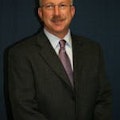Converting to waterborne has brought considerable expense. Options are available to give choices to shop owners to reduce expense. The best way to maximize your options and reduce your expense is through proper planning.
In initiating your waterborne conversion, begin with a shop review and process audit. Scrutinize all facets of your refinishing program. Analyze your paint booth, compressor, related equipment and shop layout. Next, analyze work processes and training. Discuss any challenges of concern to your paint team members.
Review any maintenance requirements as you analyze your paint booth. Now is the time to ensure the booth is working optimally. Problems found during any upgrades or conversion will delay the process, causing work delays and additional shop downtime that reduce your income-earning ability. An inspection of all booth components, air makeup unit heating capability, electronics, filters and door seals will identify items you can repair individually in a cost-effective manner.
Add fans to generate air circulation to your paint booth. Waterborne products require air flow to accelerate curing Ceiling fans, corner fan assemblies and hand-held or stand-mounted blowers are options to improve circulation.
Regardless of which system you select, do your homework. Your workflow and production limits play a part in which system you choose. Once you determine a system, look at different manufacturers and installers. Prices vary widely. Use bargaining techniques. Time is on your side to work the best deal.
Your air supply should be measured to ensure there's sufficient air quantity to operate hand-held blowers, spray guns and personal fresh air systems. Waterborne products require a constant, consistent low-humidity air supply. It's necessary to review your refrigerated air dryer to ensure it's operating at peak performance. The refrigerated air dryer should be achieving a maximum 38 degrees F dew point.
Inspection of the booth-mounted desiccant air dryer system is a must. A normal operating air compressor will deliver about three gallons of water through air lines daily. A three-stage filter system, consisting of a prefilter, fine filter and activated charcoal filter, mounted inside the booth is recommended for waterborne applications. Waterborne efficiency will be downgraded severely if your refrigerated air dryer or desiccant air dryer isn't working optimally removing moisture and other impurities. Correcting any issues with these systems in advance of waterborne conversion will save valuable time and money.
Review your paint SOP's and make changes to accommodate waterborne products. Generally, your spray out card library will convert with waterborne paints, so there's no need to recreate it using waterborne products. Incorporate a prewash to your paint process, ensuring it is compatible with the products you're using. Waterborne also requires corrosion-free paint cups.
Separate spray guns will be needed for waterborne. Attempting to use the same guns for solvent and waterborne products will lead to cross contamination opening the opportunity for redos and equipment damage. Separate procedures for handling waste and cleaning equipment will be needed for handling solvent and waterborne products after conversion. Procedures must keep the two waste products separated.
Discuss waterborne conversion with your paint team members. Provide training and the opportunity to work with the products before conversion. While spray techniques are similar for waterborne and solvent, the process varies. Some painters will need additional time to get used to coverage, enhanced metallic control and to perfect the process. Converting to waterborne is a major undertaking. Proper planning and competitive purchasing will help you eliminate excessive costs. The steps you take in preparation will reward you with minimal conversion downtime, an easier transition for your paint team, and increased production while maintaining high work quality.
About the Author
John Shoemaker
John Shoemaker is a business development manager for BASF North America Automotive Refinish Division and the former owner of JSE Consulting. He began his career in the automotive repair industry in 1973. He has been a technician, vehicle maintenance manager and management system analyst while serving in the U.S. Air Force. In the civilian sector he has managed several dealership collision centers, was a dealership service director and was a consultant to management system providers as an implementation specialist. John has completed I-CAR training and holds ASE certifications in estimating and repair. Connect with Shoemaker on LinkedIn.
